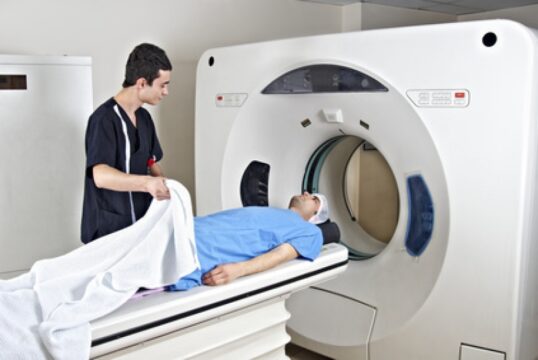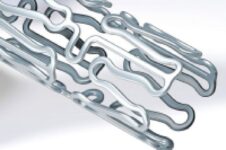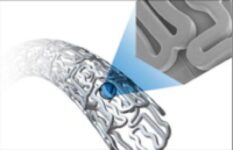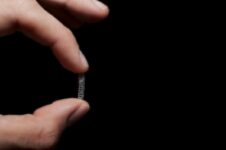Original title: Multislice Computed Tomography Angiography for Non-invasive Assessment of the 18-Months Performance of a Novel Radiolucent Bioresorbable Vascular Scaffolding Device (ABSORB Trial). Reference: Koen Nieman et al. J Am Coll Cardiol, article in press. Metal stents revolutionized coronary angioplasty procedures; however, they are permanent prosthetic devices that make re intervention difficult and prolongue thrombosis risk. This problem…
High doses of statins may reduce the lipid content in severe injury
Original title: Changes in Plaque Lipid Content After Short-Term Intensive Versus Standard Statin Therapy. The YELLOW Trial (Reduction in Yellow Plaque by Aggressive Lipid-Lowering Therapy). Reference: Annapoorna S. Kini et al. J Am Coll Cardiol 2013;62:21–9. Multiple studies have shown the benefits of statins in reducing all events, stabilize plaques and improve endothelial function. Coronary intravascular ultrasound (IVUS)…
Direct Stent, no clinical utility in patients undergoing elective
Original title: The Independent Value of a Direct Stenting Strategy on Early and Late Clinical Outcomes in Patients Undergoing Elective Percutaneous Coronary Intervention. Reference: Gabriel L. Sardi et al. Catheterization and Cardiovascular Interventions 81:949–956 (2013). The use of direct stenting (DS) without pre-stenting dilation has proven to be a safe strategy, especially with the…
Hybrid revascularization, combining strengths in high-risk patients
Original title: One-Stop Hybrid Coronary Revascularization versus Coronary Artery Bypass Graft and Percutaneous Coronary Intervention for the Treatment of Multivessel Coronary Artery Disease: Three-Year Follow-up Results from A Single Institution. Reference: Liuzhong Shen et al. J Am Coll Cardiol Intv 2013. Article in press. Accepted Manuscript. A mammary bridge to anterior descending artery (LMCA) with a permeability >…
A real challenge: Primary PCI on an Unprotected Left Main Coronary Culprit Lesion
Original title: A Systematic Review and Meta-Analysis on Primary Percutaneous Coronary Intervention on an Unprotected Left Main Coronary Artery Culprit Lesion in the setting of Acute Myocardial Infarction Reference: Marije M. Vis et al. J Am Coll Cardiol Intv 2013;6:317–24 Acute myocardial infarction with a significantly compromised unprotected left main coronary artery culprit lesion is relatively rare (4%…
The Instantaneous Wave-Free Ratio is Equivalent to Fractional Flow Reserve and does not require adenosine.
Original title: Diagnostic Classification of the Instantaneous Wave-Free Ratio Is Equivalent to Fractional Flow Reserve and Is Not Improved With Adenosine Administration. Results of CLARIFY (Classification Accuracy of Pressure-Only Ratios Against Indices Using Flow Study. Reference: Sayan Sen et al. J Am Coll Cardiol 2013;61:1409–20. When considering revascularization, measuring lesion functional compromise is known to improve clinical outcomes…
Colchicine could reduce restenosis in diabetic patients treated with BMS
Original title: Colchicine Treatment for the Prevention of Bare-Metal Stent Restenosis in Diabetic Patients. Reference: Spyridon Deftereos et al. J Am Coll Cardiol 2013;61:1679–85. In stent restenosis is more frequent in diabetic patients, who therefore find DES particularly beneficial. However, there is a subset of these patients with contraindication to prolonged double antiaggregation, due to a programmed surgery…
IVUS improves outcomes in long lesions with DES
Original title: Randomized Comparison of Clinical Outcomes between Intravascular Ultrasound and Angiography-Guided Drug-Eluting Stent Implantation for Long Coronary Artery Stenosis. Reference: Jung-Sun Kim et al. J Am Coll Cardiol Intv 2013. Article in press. Treating long lesions is difficult and the chance of instant thrombosis may be higher in these lesions. Coronary intravascular ultrasound (IVUS) can help in…
In diabetic patients, Everolimus eluting stents could perform better than Paclitaxel eluting stents
Original title: Safety and Efficacy of Everolimus-Eluting Stents Versus Paclitaxel-Eluting Stents in a Diabetic Population Reference: Ana Laynez et, al. Catheterization and Cardiovascular Intervention 81:759-765 (2013) Everolimus eluting stents have already been compared with paclitaxel eluting stents in the general population, and they have proved to perform best, especially as regards revascularization and in-stent thrombosis. However, these data…
Incomplete revascularization: no longer a binary variable
Original title: Residual SYNTAX score after PCI for triple vessel coronary artery disease: quantifying the adverse effect of incomplete revascularisation. Reference: Christopher J. Malkin et al. EuroIntervention 2013;8:1286-1295. In the angioplasty branch of the SYNTAX study, complete revascularization was reached in 56.7% of the population. On the other hand, in the real world, around 40% of patients that…
Bioresorbable stents produce more occlusion of the small side branches
Original title: Incidence and Short-Term Clinical Outcomes of Small Side Branch Occlusion Alter Implantation of an Everolimus-Eluting Bioresorbable Vascular Scaffold Reference: Takashi Muramatsu et al. J Am Coll Cardiol Intv 2013;6:247–57. Small Side Branch Occlusion (SBO) during coronary angioplasty has been associated with periprocedural infarction. Among the factors that cause SBO are carina displacement, plaque displacement and artery…










